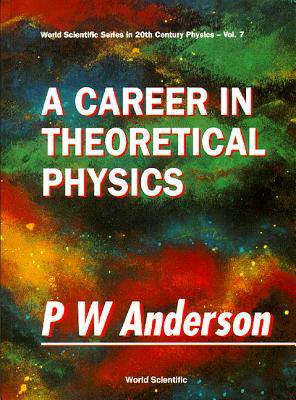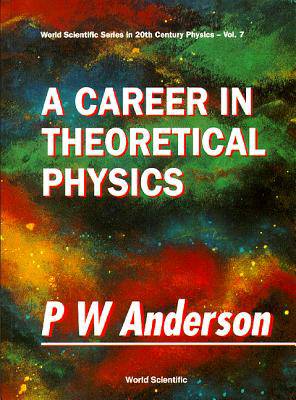
- Afhalen na 1 uur in een winkel met voorraad
- Gratis thuislevering in België vanaf € 30
- Ruim aanbod met 7 miljoen producten
- Afhalen na 1 uur in een winkel met voorraad
- Gratis thuislevering in België vanaf € 30
- Ruim aanbod met 7 miljoen producten
Zoeken
A Career in Theoretical Physics
Series in 20th Century Physics
€ 465,95
+ 931 punten
Omschrijving
Theoretical physicist and Nobel Laureate Philip Anderson has been described as one of the most imaginative of condensed matter physicists working today. His achievements have not merely constituted significant discoveries in their own right, but have also frequently set the agenda for the work of others. His pioneering contributions include the Anderson model of magnetic impurities and the concept of localisation, both of which were mentioned in his Nobel Prize citation. He also worked on the study of spin glasses, the fluctuating valence problem and superexchange. He predicted the existence of superfluidity in He-3 and provided a microscopic explanation, and was involved in the discovery of the Josephson effect. The understanding of topics as diverse as the Higgs mechanism, pulsar glitches, high Tc superconductivity, flux creep and flow in superconducting magnets and the solution of the Kondo problem has benefited from his contributions.This volume contains a discriminating selection of the many topics on which Philip Anderson has worked. Some of the papers included are now hard to find elsewhere, and each has been embellished with commentary on how they came to be written. Anderson has also provided an entertaining introduction setting out his philosophy of what is important in science.
Specificaties
Betrokkenen
- Uitgeverij:
Inhoud
- Aantal bladzijden:
- 896
- Taal:
- Engels
- Reeks:
- Reeksnummer:
- nr. 7
Eigenschappen
- Productcode (EAN):
- 9789810217174
- Verschijningsdatum:
- 1/06/1994
- Uitvoering:
- Hardcover
- Formaat:
- Genaaid
- Afmetingen:
- 200 mm x 267 mm
- Gewicht:
- 1773 g

Alleen bij Standaard Boekhandel
+ 931 punten op je klantenkaart van Standaard Boekhandel
Beoordelingen
We publiceren alleen reviews die voldoen aan de voorwaarden voor reviews. Bekijk onze voorwaarden voor reviews.










